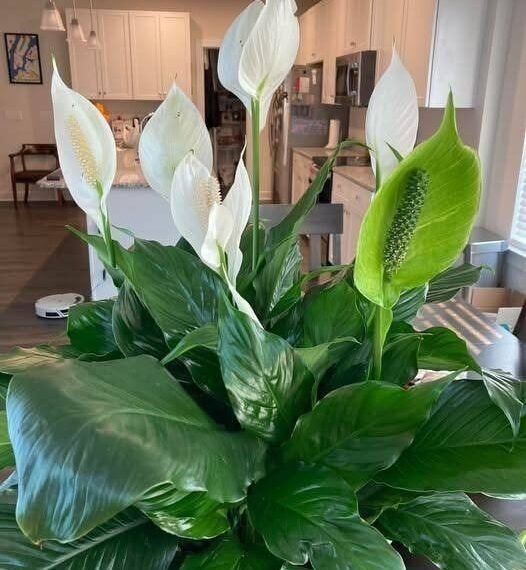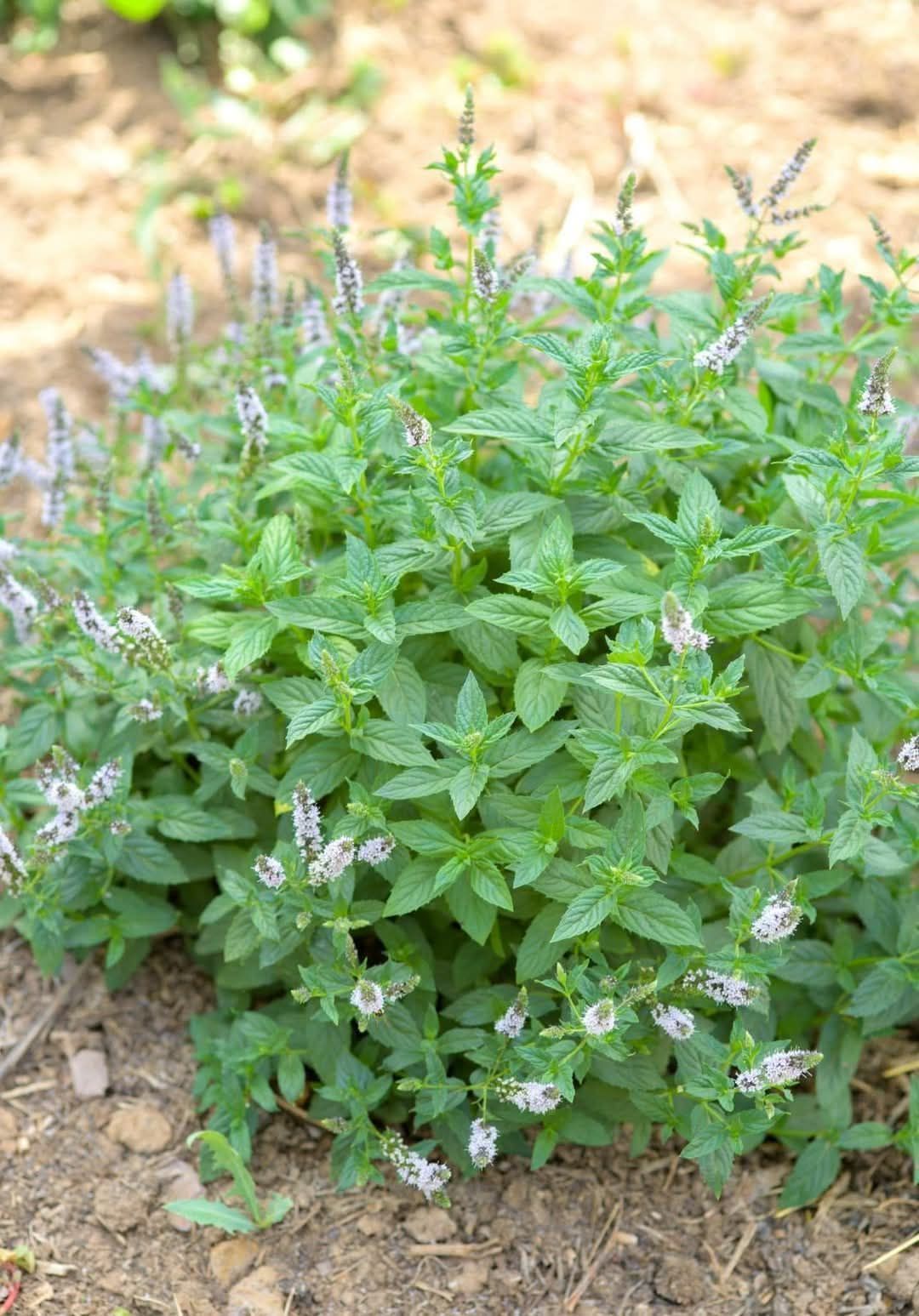Native to tropical rainforests, peace lilies thrive in environments with humidity levels between 50% and 60%. Low humidity is a common cause of brown leaf tips, leaf curling, and reduced flowering.
- Increase humidity by:
- Placing your peace lily on a tray filled with water and pebbles. As the water evaporates, it increases moisture around the plant.
- Grouping your peace lily with other plants, creating a microenvironment of increased humidity.
- Using a small humidifier nearby, especially in dry climates or during winter when indoor air is typically dry.
- Mist the leaves occasionally, but remember misting alone cannot replace consistently higher humidity.
Maintaining humidity mimics the peace lily’s natural rainforest habitat and helps promote healthy blooms.
4. Feed It (But Don’t Overdo It)
Feeding your peace lily is essential to support healthy growth and encourage flowering. But balance is key — too much fertilizer can lead to salt buildup in the soil, which stresses the plant.
- Type of fertilizer: Use a balanced liquid houseplant fertilizer with equal parts nitrogen, phosphorus, and potassium (e.g., 10-10-10 or 20-20-20).
- Feeding schedule: Fertilize every 6 to 8 weeks during spring and summer, when the plant is actively growing.
- Pause during dormancy: Stop feeding in fall and winter, as the plant’s growth naturally slows and it needs fewer nutrients.
- Dilution: Always dilute fertilizer to half the recommended strength to avoid overfeeding.
A well-fed peace lily has the energy and resources to produce those graceful, white blooms.
5. Keep It Warm (No Cold Drafts!)
Peace lilies prefer stable, warm temperatures ranging from 65°F to 80°F (18°C to 27°C). Exposure to cold drafts or sudden temperature drops can shock the plant, causing stress that prevents blooming.
- Avoid placing near: Air conditioners, drafty windows, or doors that open frequently.
- Consistent warmth: This simulates their tropical origin and encourages steady growth and flower production.
6. Repot When Root-Bound
A peace lily that’s been in the same pot for too long may become root-bound, meaning its roots have filled the pot and have little space to grow. This restriction can stunt flowering and overall plant health.
- Check for root-bound signs: Roots circling the surface or growing through drainage holes indicate it’s time to repot.
- Repotting process: Choose a pot 1 to 2 inches larger in diameter and use fresh, well-draining potting mix.
- When to repot: Spring is the best time, as the plant is entering its active growing phase.
Repotting refreshes soil nutrients and gives roots room to expand, encouraging robust growth and more blooms.
Bonus Tips for Lush Peace Lily Blooms
- Remove spent flowers: Cut off old blooms at the base to encourage the plant to focus energy on new flower production.
- Clean the leaves: Dusty leaves can’t photosynthesize efficiently. Wipe leaves gently with a damp cloth to keep them healthy.
- Avoid stressors: Sudden changes in environment, excessive fertilization, or improper watering can stress your peace lily. Keep conditions steady for best results.
Common Questions About Peace Lily Flowering
Q: How long do peace lily flowers last?
A: Individual blooms can last several weeks, with new flowers emerging periodically if conditions are right.
Q: Can a peace lily bloom indoors all year round?
A: With consistent care and the right conditions, some peace lilies can bloom multiple times a year indoors.
Q: What if my peace lily has brown leaf tips but still isn’t flowering?
A: Brown tips often signal low humidity or inconsistent watering. Improving these factors can help both leaf health and blooming.
Final Thoughts
Getting your peace lily to flower more isn’t about drastic changes or complicated routines. It’s about understanding the plant’s natural preferences and creating a consistent, supportive environment that mimics its tropical roots. Bright, indirect light, proper watering, increased humidity, balanced feeding, warmth, and occasional repotting are the key ingredients for coaxing out those elegant white blooms.
With patience and attentive care, your peace lily will reward you with beautiful, lush foliage and graceful flowers that brighten your home and lift your spirits — a perfect reminder of the quiet joys of nurturing living things.





